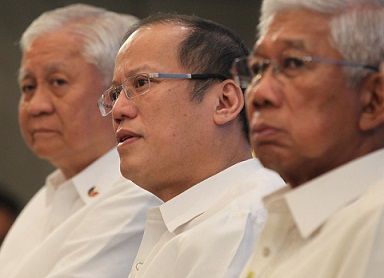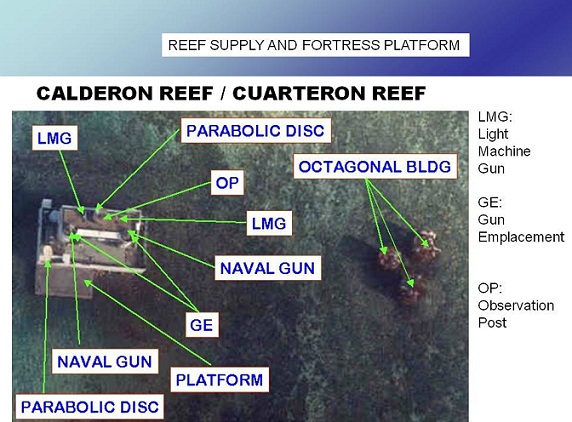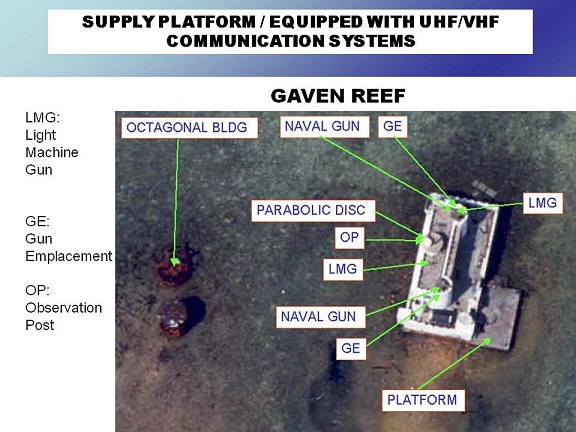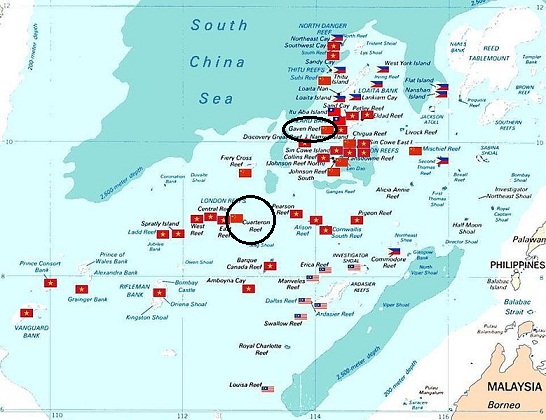
Reporters usually do not get that kind of candidness from more mature and prudent statesmen especially in foreign relations issues.
In other countries, they have department or ministry spokesmen, who do the talking on running issues. But President Aquino is, well, PNoy.
Yesterday, the President was asked by Bloomberg’s Joel Guinto on the sidelines of the Asia-Europe Meeting Manila Conference on Disaster Risk Reduction and Management at the Diamond Hotel about the latest in China-occupied Mabini Reef (international name: Johnson South Reef) where the Philippines protested the construction of what looks like an airstrip.
Aquino did not have a Mabini Reef update. Instead he disclosed movement of Chinese ships in two Chinese-occupied reefs.

He said: ‘Yung latest na report na natanggap natin, we are again bothered that there seems to be developments in other areas within the disputed seas. Amongst them parang may movement ng ships, the ships that were… Well, we’re not saying that they are exactly the same ships that were used in Mabini, but there are seems to be similar ships at the very least in a feature called ‘yung—one is Gaven Reef, the other is Cuateron Reef.”
He even spelled out Cuateron to Guinto making sure that it has no “R” as mistakenly written in the complaint the Philippines filed against China before the United Nations Arbitral Tribunal.
The President said: “ Cuateron is spelled C-U-A-T-E-R-O-N. That is the international name. Cuateron is called—we call it Calderon. So Cuateron and ‘yung Gaven Reef.”
Asked if reclamation activities by China have been seen aside from ships movement, the President said, “‘Yung pictures that I saw were just ships that can be used for reclamation. Pictures pa lang, ano, unlike Mabini na talagang from nothing nagkaroon na ng geographical feature.”

That’s the good thing about a transparent president. His subalterns are compelled to do the same. Defense Spokesman Peter Paul Galvez had to give the info that reclamation activities in Cuateron were monitored in March and Gaven last month.
The President’s disclosure encouraged Foreign Affairs Albert del Rosario to criticize Beijing anew. He said: “I can see the aggressive provocative acts. It’s their way to pursue an expansion agenda. I see an expansion agenda and that’s clear to everyone. The status quo has been changed.”
Del Rosario predicted that “Until this expansion agenda is completed, I don’t see a desire on their (China’s) part to conclude the COC ( Code of Conduct in the South China Sea).
Del Rosario’s strong words have yet to be matched by action in terms of filing a diplomatic protest against China over this latest development.
The occupation by China of Gaven Reef, 205 nautical miles from Palawan and Cuateron Reef, 245 nautical miles from Palawan are included in the suit filed by the Philippines with the UN Arbitral Tribunal for the nullification of China nine-dash line map.
The Philippines contends that Gaven Reef which is below water at high tide is not entitled to the 12 NM territorial sea, 200 NM Exclusive Economic Zone and 200 NM Continental Shelf. Cuateron Reef consists of coral rocks reaching no higher than 1.5 meters at high tide. As such, it is not entitled to no more than 12 NM territorial sea.
In May 2011, TV5’s DJ Sta. Ana reported that “China built permanent reef fortresses and supply platforms at the Calderon, Gaven and Chigua reefs. These supply platforms can resist winds up to 71 knots and are equipped with VHF / UHF communications equipment, search radars as well as naval guns and anti – aircraft guns. These three supply platforms can also serve as docks for Chinese navy patrols boats.”
Just like Mabini Reef, Cuateron and Gaven Reef are actually near islands occupied by Vietnam, which is embroiled in a more provocative activity of China: deployment of an oil rig in Paracel being contested also by Vietnam.
There are an estimated 750 islands, islets, reefs, and rocks which are referred to as “features” in the Spratlys in the South China Sea. Almost the whole of vast South China sea is being claimed by China and Taiwan while parts of the area are claimed by the Philippines, Brunei, Malaysia and Vietnam.
Vietnam occupies the most number of islands (22), Philippines has presence in nine, China in eight, Malaysia in four and Taiwan, one. Only Brunei among the claimants does not occupy any island in the Spratlys.

China does not occupy a single island, only reefs as part of the “salami-slicing and cabbage defense” strategy of the Singkits